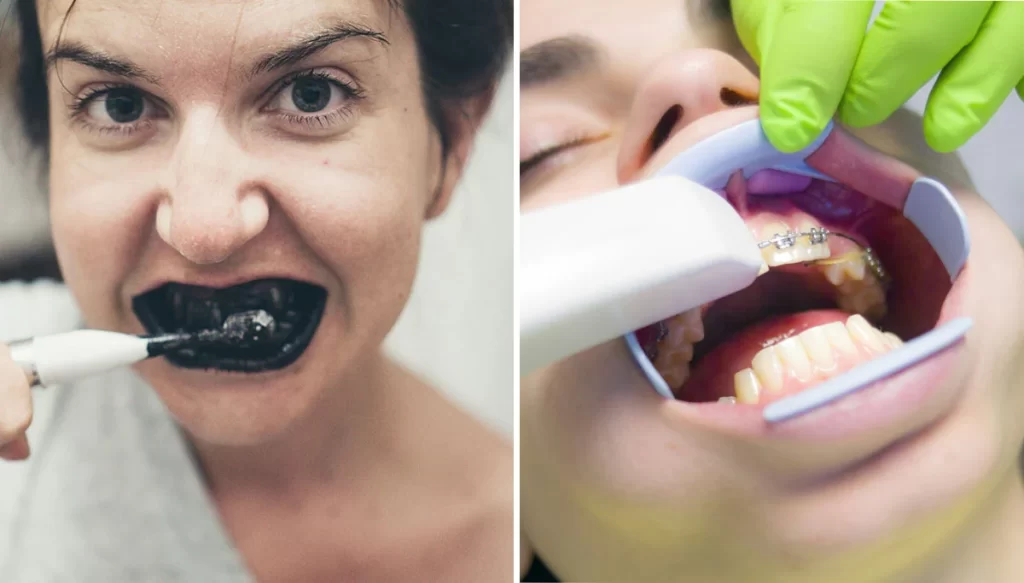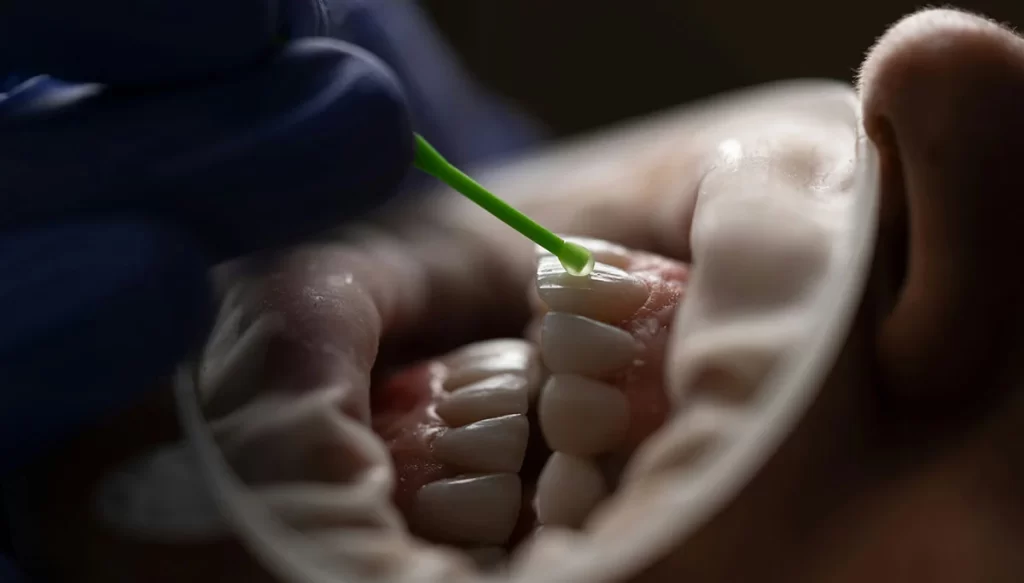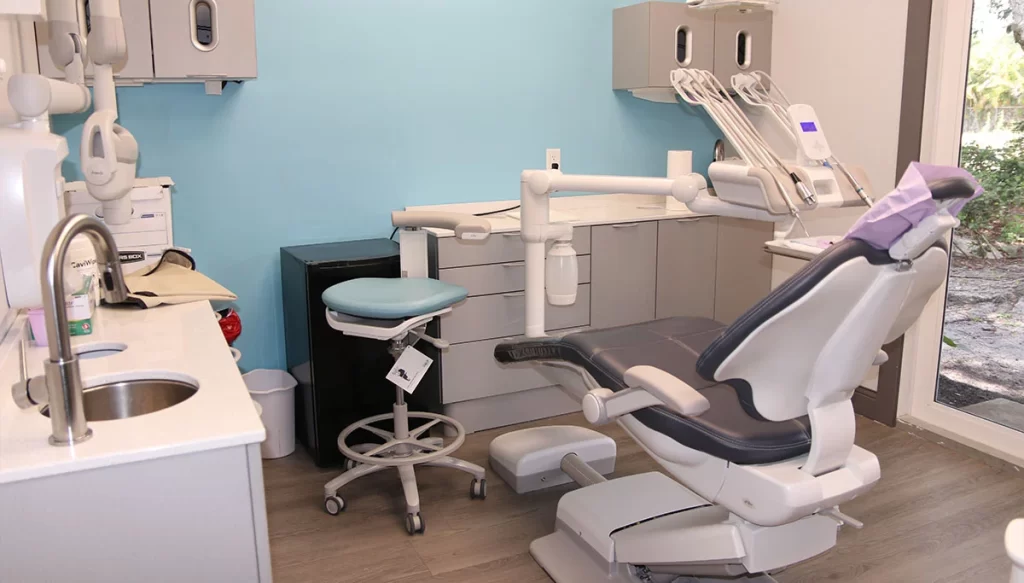- Teeth Discoloration
- Professional Teeth Whitening vs. At-Home Remedies
- Consultation and Evaluation Process
- Different Dental Whitening Techniques
- Preparing for Dental Whitening Treatment
- Teeth Whitening Procedure
- Post-Whitening Care and Maintenance
- Professional Teeth Whitening Services in Boynton Beach
A clear smile is a good way to impress people and make yourself more approachable. You also become more confident if you know that your teeth look good. Smiling can even make you look more friendly and trustworthy, which can positively impact your career and social life. But if your teeth are stained or discolored, you might become self-conscious, especially when speaking or smiling.
One of the best ways to brighten your teeth and restore a natural smile is teeth whitening. Teeth whitening procedure makes your teeth look better and removes any stains. While you can opt to undergo the procedure at home, most prefer it done professionally at a dental office.
Keep reading to learn more about professional dental whitening.
Teeth Discoloration
Any person, regardless of their age, can develop tooth discoloration, and due to several factors including:
- Consuming dark-colored fruits and vegetables such as red wine, tea, coffee, and berries.
- Chewing tobacco or smoking regularly: These products have nicotine and tar that cause brown stains after accumulating on your teeth.
- Medications such as antihistamines, antibiotics, and high-blood-pressure medication
- Medical conditions such as liver disease or celiac disease.
- Age
- Genetics
Also, depending on the cause of teeth discoloration, the color of the stain will vary. For instance, black stains indicate severe tooth decay or exposure to manganese or silver.
Professional Teeth Whitening vs. At-Home Remedies

Although DIY dental whitening can happen in the comfort of your home, it may not produce the best results. Instead, let a professional dentist use the correct tools and skills to extract embedded stains. If you choose over-the-counter teeth whitening products, the results may take a long time to manifest. The whitening might also not be evenly distributed, causing your teeth to have patches.
Your chosen home whitening products may not have the right ingredients to whiten your teeth. Also, some ingredients can irritate your gums or damage the outer layer of your teeth. Professional dental whitening is fast, safer, offers long-lasting results, and has a low risk of sensitivity. Also, your dentist will customize dental whitening procedures for your teeth and individual needs to guarantee the desired results. For instance, you can choose the level of brightness you want for your teeth and the areas where you need it with professional teeth whitening.
Consultation and Evaluation Process
During the initial meeting at the dental office, your dentist closely studies your oral health and takes note of dental issues such as tooth decay and gum disease. You can bring up your concerns and ask questions about your oral health status. The dentist can determine whether you need to undergo some oral health treatment before the teeth whitening procedure.
Different Dental Whitening Techniques
The existing dental whitening techniques have different levels of effectiveness and intensity. In-office whitening procedures are the most effective and quickest way to whiten your teeth. You visit a dentist who applies a specific cleaning concentration such as bleaching gel.
If you prefer to whiten your teeth in the comfort of your home, take-home whitening kits can be perfect for you. The dentist will make impressions of your teeth and use that information to create custom-made trays. They will then fill the trays with a teeth-whitening substance, like peroxide. Whenever you are ready, you fit the trays over your teeth for a certain amount of time.
After a couple of weeks, you may start to notice changes to your teeth. Although the results take long to manifest, you have more control over the whitening process.
Preparing for Dental Whitening Treatment
Before the teeth whitening process can start, a professional must clean your teeth. Professional teeth cleaning gets rid of tartar and plaque on your teeth. These substances can interfere with the whitening procedure and cause poor results.
Your dentist then examines your teeth to determine whether dental whitening can work for you. The oral test focuses on common dental issues such as gum disease and cavities. If the dentist identifies any issue, they will treat it first.
While most people are candidates for dental whitening, there are a few exceptions. Pregnant or breastfeeding women should not undergo dental cleaning, as they may experience adverse effects. Also, individuals who have severe gum disease may also avoid the procedure because teeth whitening can cause gum irritation. Other instances include people with existing dental work or hypersensitive gums.
Teeth Whitening Procedure

The process typically begins with the dentist putting a tooth shade on your teeth. The shade looks exactly like your current teeth and helps the dentist to monitor the entire process. If you haven’t already done professional cleaning, your dentist will use a pumice paste to clean your teeth. The paste effectively removes any stains on the surface of your teeth and paves the way for better cleaning.
The dentist will then place a small device in your mouth to retract the lips and keep the mouth open. That way, the dentist will have obstructed access to all the teeth in your mouth. Since gums are sensitive, the dentist will place a protective substance such as liquid resin or light-cured gum dam on the gums.
The next step is the application of a gel, such as hydrogen peroxide, on their teeth. Although the gel can clean your teeth on its own, the dentist can decide to use an activation device. For example, a specific light source like a laser can increase the speed of teeth whitening.
After a specific duration, the dentist removes the gel from the surface of your teeth. They then monitor how much your teeth have whitened. If they’re not satisfied with the results, they can repeat the process of application and light activation. This can go on for several cycles, with each cycle increasing the effectiveness of the gel on your teeth.
The dentists will also monitor how the gel is affecting the sensitivity of your tooth. Whenever you start to feel discomfort, the dentist can apply a cooling technique or reduce the gel concentration.
When the dentist achieves the predetermined teeth whitening level, they remove any remaining gel on your teeth. They also remove the protective barrier and thoroughly clean your teeth and mouth. If the process was successful, the whitening should align with the baseline shade recorded earlier. Additional treatment might be necessary if the shades don’t match. Some dentists also apply fluoride treatment to protect against any teeth sensitivity.
Post-Whitening Care and Maintenance

You will receive instructions on how to take care of your teeth after the processor is over. Dietary changes may be necessary to protect your teeth. For instance, you may have to limit colored beverages and foods. Regular brushing and flossing can also help to maintain your bright smile.
Professional Teeth Whitening Services in Boynton Beach

A bright smile makes you confident and ready to take on the world, as most people quickly notice white teeth. While you can do dental whitening at home, the best results are achieved at a dental office. You will receive a professional examination and undergo a quick teeth whitening procedure.
If you’re in South Florida and need professional teeth whitening, Eriks Dental Group has you covered. We’re a premier dental office ready to take care of all your dental needs from teeth whitening, and cosmetic dentistry to family dentistry.
Contact us today at 561-733-4004 to speak to one of our dental specialists or request an appointment.

